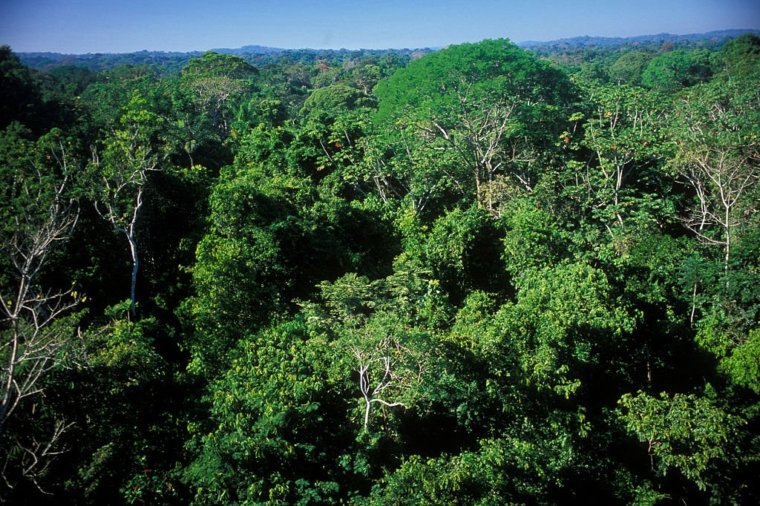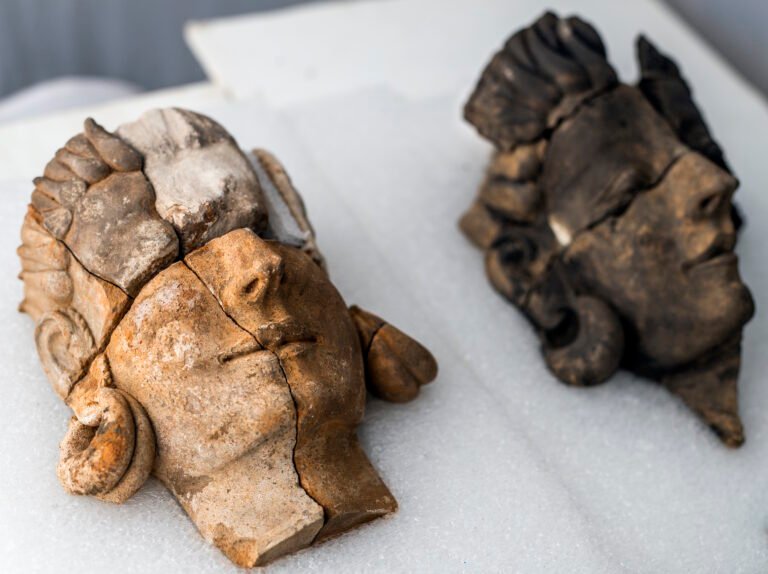Deep within the tangled green heart of South America lies a world shrouded in mystery. The Amazon Rainforest, often described as the lungs of the Earth, is a colossal sea of trees stretching across nine countries. For centuries, it was thought to be an impenetrable wilderness—untamed, untouched, and uninhabited except by a few scattered tribes. The very idea of large civilizations thriving in such a place seemed implausible. But recent scientific discoveries and emerging technologies have shattered this misconception. Hidden beneath the dense canopy, buried under centuries of soil and silence, lie the ruins of lost Amazonian empires—sophisticated, urbanized societies that defy the old narrative of the “empty” jungle.
These were not simple hunter-gatherer communities eking out an existence. These were cities with vast road networks, engineered landscapes, monumental architecture, and complex cultures. And they weren’t isolated blips in history. They flourished for centuries, perhaps millennia, before vanishing into obscurity. Now, as archaeologists armed with satellites, drones, and LIDAR (Light Detection and Ranging) begin to peel back the layers of time, we are witnessing one of the greatest rediscoveries in human history.
The Myth of the Empty Amazon
For hundreds of years, European explorers described the Amazon as a desolate, hostile environment. The influential 20th-century geographer Betty Meggers famously claimed that the rainforest’s poor soils and harsh climate made it impossible for complex societies to emerge. Her theory shaped decades of thought: the jungle was too unforgiving to support anything more than scattered tribes living in subsistence.
But oral histories told a different story. Indigenous peoples spoke of ancient cities swallowed by trees, of powerful ancestors and lost kingdoms. The first Spanish explorers like Francisco de Orellana, who sailed down the Amazon River in 1541, described cities teeming with people, monumental structures, and organized agriculture. These accounts were long dismissed as exaggerations, hallucinations, or lies—until the evidence started to surface.
A Turning Point: The LIDAR Revolution
The real breakthrough came with the advent of LIDAR technology. Mounted on drones or airplanes, LIDAR devices send out laser pulses that penetrate vegetation and create detailed 3D maps of the terrain below. In the Amazon, this has been nothing short of revolutionary.
In 2022, a German-Bolivian research team revealed one of the most significant LIDAR discoveries to date: an elaborate network of ancient cities in the Bolivian Amazon, built by the Casarabe culture. These cities, hidden under thick forest, had pyramids, platforms, moats, and even elevated causeways stretching across kilometers of jungle. The cities were large, some covering over 300 hectares—on par with medieval European towns.
This was not a lone discovery. In Brazil, Peru, Ecuador, and Colombia, similar patterns have emerged. LIDAR is rewriting our understanding of the Amazon. The jungle is not just a natural wonder; it’s a historical archive. The forest, in many places, grew over what was once civilization.
The Casarabe Culture: Cities in the Forest
The Casarabe people, who thrived between 500 and 1400 AD in what is now the Llanos de Moxos region of Bolivia, built cities like Cotoca and Landívar. These were not random settlements but carefully planned urban centers. Massive pyramidal mounds rose above the trees, likely serving as religious or administrative centers. Defensive ditches and moats surrounded the core areas, and canals hinted at sophisticated water management systems.
Even more remarkable were the raised causeways—straight, elevated roads stretching for miles, connecting one settlement to another. These causeways suggest not only urban planning but also a level of political organization capable of mobilizing large labor forces.
The Casarabe were also master agriculturalists. They engineered fishponds, reservoirs, and raised fields to control water in the flood-prone savannah. Their landscape was not shaped by the whims of nature—it was sculpted by human hands.
The Terra Preta Mystery: Amazonian Black Earth
One of the most compelling clues to the existence of lost Amazonian civilizations is the mysterious soil known as terra preta, or “dark earth.” Scattered throughout the Amazon Basin, terra preta is unusually fertile compared to the region’s typically poor, acidic soils. It is rich in charcoal, bones, pottery shards, and organic waste—evidence that it was human-made.
Dating back over 2,000 years, terra preta was created through a process of soil enhancement involving biochar and composting. This practice allowed people to grow crops more efficiently in an otherwise challenging environment. Its presence in large patches—some extending for hundreds of hectares—suggests dense, long-term human habitation.
What’s more, terra preta regenerates itself over time, an astonishing quality that modern scientists are still trying to replicate. These “dark earths” are a legacy of a civilization that understood ecology on a profound level, using sustainable methods to live in harmony with the forest.
The Xinguano and the Kuikuro: Guardians of the Past
In the Upper Xingu region of Brazil, the Kuikuro people today live on land that once belonged to an elaborate network of pre-Columbian settlements. Archaeologists working in this area have uncovered plazas, palisades, ditches, and causeways that align with Kuikuro oral traditions. These traditions speak of large villages connected by roads, ringed with protective walls, and organized around ceremonial centers.
Research suggests that the Xinguano civilization, which peaked around 1250 AD, may have included more than 20,000 people living in a network of connected towns. The settlement patterns resemble a low-density urbanism—a kind of jungle suburbia, where communities were linked but not concentrated in a single megacity. This allowed the civilization to flourish without overburdening the ecosystem.
Unlike civilizations that left behind towering stone ruins, the Xinguano built with earth and wood. Their architecture has largely decayed, but their legacy survives in the memories of their descendants and the geometry of the land.
Echoes of El Dorado: Legends and Realities
The search for El Dorado—the mythical city of gold—drove countless expeditions into the Amazon. Most ended in failure, tragedy, or madness. Yet, perhaps the legend wasn’t entirely fiction. While the gold might have been metaphorical, the idea of a grand Amazonian civilization may have been rooted in truth.
In fact, many of the early Spanish explorers might have glimpsed these societies just before they collapsed. Diseases brought from Europe, particularly smallpox and influenza, devastated indigenous populations. The mortality rate in some regions may have exceeded 90%. Entire cities could have vanished in a single generation, their memory erased by jungle growth and the silence of death.
Thus, the civilizations of the Amazon didn’t vanish in war or conquest—they were decimated by pathogens. The forest that seemed so empty to later explorers was, in fact, a graveyard of forgotten empires.
The Amazon as a Garden: Reimagining the Landscape
Another myth long held about the Amazon is that it is a “pristine wilderness”—a virgin forest untouched by human hands. But the emerging view is radically different: the Amazon, in many places, is a garden. It was managed, shaped, and cultivated over centuries.
Studies of plant species distribution show that many useful trees, such as Brazil nuts, cacao, and acai, are more abundant near archaeological sites. This suggests that ancient Amazonians actively managed forest biodiversity. The forest was not merely endured—it was engineered.
This concept is known as the “cultural parkland” hypothesis: the idea that the Amazon was not a wild jungle but a humanized landscape. It is a powerful reminder that humans and nature can co-create environments, rather than exist in opposition.
Rediscovering a Civilization of Knowledge
The people of the Amazon may not have left behind stone pyramids like the Maya or Inca, but they achieved something equally impressive. They built sustainable societies in one of the most ecologically complex environments on Earth. They understood soil science, hydrology, urban planning, and environmental stewardship.
They were not primitive tribes in survival mode—they were engineers, artists, astronomers, and philosophers. They created oral literatures, spiritual traditions, and social systems that lasted for centuries. Their legacy is embedded not just in ruins, but in living cultures and in the very fabric of the forest.
The Modern Challenge: Protecting the Past, Preserving the Future
As interest in Amazonian archaeology grows, so too does the threat of looting, deforestation, and destruction. Logging, mining, and agricultural expansion are erasing the very sites that could yield transformative insights about human history.
Worse still, the descendants of these civilizations—indigenous peoples who carry centuries of knowledge—are under threat from political oppression, cultural marginalization, and environmental degradation. Protecting the Amazon’s lost cities means protecting its living communities. The two are inseparable.
International cooperation, indigenous leadership, and responsible scientific research are essential to safeguarding this priceless heritage. The rainforest is not just a carbon sink; it is a library of human achievement waiting to be read.
Conclusion: The Rainforest Remembers
The story of the lost empires of the Amazon is not merely an academic curiosity. It is a humbling revelation. For centuries, we underestimated the ingenuity of those who came before us. We assumed the jungle was a void. In truth, it was a cradle.
As archaeologists continue to explore, map, and unearth the past, we must reckon with the possibility that the Amazon harbored civilizations as complex and meaningful as any in the ancient world. Their ruins may be covered in moss and silence, but their legacy pulses in the roots of trees, in the patterns of rivers, and in the memory of the land.
The rainforest remembers. And finally, so do we.






